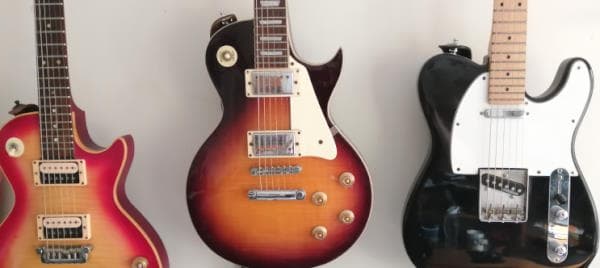
I wonder how many thousands and thousands of models of guitar are on the market. The quality of even budget instruments these days is very often excellent, so how on earth am I going to pick some to recommend?
The needs of the home studio musician are my main concern on this site. So I will choose instruments that I have actually played, and that I feel offer superb bang-for-buck. These guitars are also versatile, and likely to be usable in a variety of musical situations.
The top guitar recommendations for a home studio:
- Chapman ML1 Modern Standard – A great playing 24-fret S-shape modern electric guitar, with a superb neck. The ML1 Modern Standard feels as though it should cost a lot more than it does. This is a 2 humbucker guitar, but the coil-tap lets you get more single coil-like sounds that are surprisingly good, making this instrument a versatile workhorse.
- Squier Bullet Telecaster – It’s a telecaster, but it costs less than $200! Classic tele features – 21 frets, 2 single-coil pick-ups, 3-way selector switch, gorgeous jangly sound equally at home in atmospheric pop as in classic rock. When I borrowed one of these from a friend of mine I could not believe how good it was for the money.
Recording electric guitars
Recording electric guitars used to be all about putting a microphone in front of a guitar amp. And it still is – many guitar parts are still recorded this way. But these days we have amp sims – software that simulates guitar amps allowing us to do away with the real physical amp completely and go straight from our guitar into our audio interface.
Amp sims have got to the point where the technology is very good. As such, they react like a real amp does; turn the guitar’s volume down and the sound will clean-up, turn it up and the sound will break up and start to overdrive.
You can expect both my guitar recommendations above to behave in this way. The single coils of the telecaster will give you a nice crunchy sound on an amp sim set to an overdriven preset. Whereas the humbuckers of the Chapman will push an amp sim harder, leading to a more overdriven sound with more sustain. Both of these guitars will serve you very well as modern recording guitars using amp sims.

